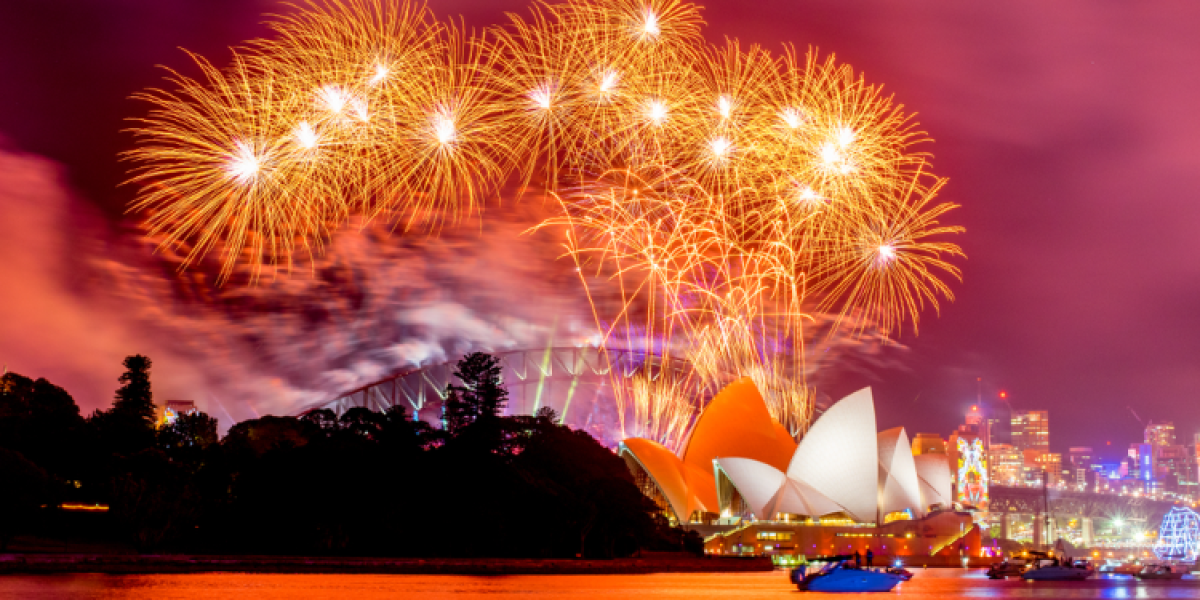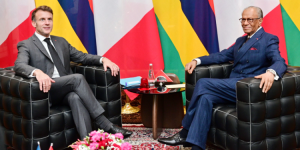
Like other festivities, the New Year varies between cultures. In some countries, it is celebrated with pomp and splendor, while in others, the celebrations are toned down or focused on shopping. The Northern Hemisphere is in winter and the Southern Hemisphere is in summer on December 31, which also creates very different experiences. Many non-Western countries use another calendar than the Gregorian one and have another much more culturally significant “New Year” than December 31.
Southern Hemisphere countries like Australia and Brazil celebrate the New Year at the height of summer
Expats from the Northern Hemisphere – Europe, Asia, the US, Canada, etc. – might be used to the picturesque idea of a snowy Christmas and New Year: hot chocolate with marshmallows, cute new sweaters and beanies, fireplaces and bonfires. However, if they become expats in any Southern Hemisphere country, they'll find that New Year is at the peak of summer!
In the Southern Hemisphere, many of the traditional symbols of the holiday season, like mall Santas and pine trees, will be there, but with adjustments for the hot weather! The mall will be air-conditioned to prevent Santa from suffocating in his thick, woolen clothes, and the pines might be fake in the absence of these trees in the ecosystem. Australian food magazines like Taste and Delicious give cold holiday recipes to be enjoyed in temperatures between 25-29°C (78-84°F): cold ham and turkey, BBQ cooked outside or even at the beach, tequila coolers and spritzes, and various salads.
The beach is a big New Year celebration hotspot for many in the Southern Hemisphere. Many Brazilians will crowd to the beach, notably to Copacabana at Rio de Janeiro, dressed in white, a color which is both excellent for hot weather and symbolizes good luck because it honors the Afro-Brazilian sea goddess Lemanjã. Many beachfront restaurants and bars offer New Year's meals. And when the clock strikes midnight, Brazilians jump into the warm sea wearing Lemanjã's white to bring further good luck.
Countries like China and GCC nations have other cultural New Years
Many non-Western countries use a second local calendar in addition to the Gregorian one, which is used mainly for civic purposes. The Chinese and Korean calendars are hybrid lunisolar ones, while the Islamic calendar in Muslim-majority countries is a purely lunar one. While these countries do have some New Year festivities on December 31/January 1, these festivities can be fairly new, be driven mainly by Westernization or by businesses (which want to tap into the holiday shopping season!), and not be very culturally significant for families.
For instance, in China, the Chinese New Year/Spring Festival, whose date ranges from late January to March, is much more culturally significant than the Gregorian New Year. It is the time when young Chinese adults travel back to their native towns or villages to celebrate with their parents, grandparents and entire extended families. Late December is more of a shopping holiday centered around malls.
In fact, in China, most workers don't even get holidays in December: their longest days off work are granted for the Spring Festival. December 31 and January 1 are public holidays, but the other days in that period are normal working days. Shanghai is the Chinese city with the most Western influences, so it has more spectacular December 31 celebrations than most other cities of the country – even more than Beijing.
The Korean Lunar New Year, Seollal, also tends to be in late January, February, or March. While December 31 is celebrated with fireworks and partying, and even the tolling of a belfry dating from the 1300s in downtown Seoul (the Bosingak Belfry), it is Seollal that's more important for family celebrations. Like the Chinese Spring Festival, Seollal is when Koreans will actually return to their hometowns, visit their extended families (especially their grandparents), and share traditional foods like “ddeokguk” (rice cake soup).
What about Gulf countries? The Islamic calendar is used in all Gulf countries, in addition to other Islamic countries like Iran or North African ones. This calendar's New Year, the “Raʼs as-Sanah al-Hijrīyah,” falls on a different date of the Gregorian calendar each year: in 2022, it was on July 29; in 2018, it was on September 10, etc. In 2023, it will be on July 18. While the Gregorian New Year doesn't have the deep cultural or religious significance of the Islamic New Year, or it might not even be a public holiday, there are plenty of venues to celebrate it because of the large expat populations in Gulf countries.
In the UAE, where 90% of all residents are expats, it is a public holiday, and there are majestic firework displays, notably at the Burj Khalifa and Global Village. There are many party spots, notably Yas Island. New Year's Eve is also a public holiday in Oman. In Kuwait, only January 1 (but not December 31) is a public holiday. In Qatar, January 1 is a bank holiday but not a full public holiday. Meanwhile, there are no holidays at all during this period in Saudi Arabia. Expats in Saudi Arabia can plan a special dinner or see fireworks in big cities like Riyadh and Jeddah, but there won't be dazzling partying or much music. In Qatar, celebrations are also generally limited to hotels, resorts and restaurants.
Specific New Year traditions vary even between European countries
New Year festivities can also vary between European countries, of course, not only countries in the Southern Hemisphere. On the forum of Expat.com, expats in Europe expressed themselves about their different experiences of New Year celebrations while living abroad.
One expat, Guest5891, has lived in various East European and Baltic countries and says that, in his experience, New Year celebrations are a “much bigger event” in Estonia than in Finland. He says that while people do set off fireworks at the strike of midnight in Finland, most of them still go to sleep by 2 a.m. instead of staying up all night. In his experience, the food available for New Year's in Estonia is also more varied and lavish, while in Finland, it's mostly basic staples like potato salad.
This expat on the forums also highlights that in Russia, children receive their gifts on December 31 instead of for Christmas. They also write to Ded Moroz, a figure similar to Santa Claus, for New Year and set up a New Year's tree, the Novogodnaya Yolka. This is because, like China and Gulf countries, Russia has a second calendar: the Julian Calendar of the Orthodox Church, whose Christmas is on January 7 and religious New Year on January 14. Hence, early January is a more culturally and religiously relevant holiday season for Russians – even if there are celebrations, including concerts and firework displays in the Red Square, on December 31.
In Spain, too, the main gift-giving event falls around New Year's Day instead of Christmas Day. Día de Los Reyes, or the Epiphany, is celebrated on January 6 with gift-opening and lavish street parades featuring the Three Wise Kings. The same day is celebrated in Central and South American countries on either January 5 or 6. Another interesting New Year tradition in Spain is eating 12 grapes on December 31, one for each strike of the bell at midnight.



















